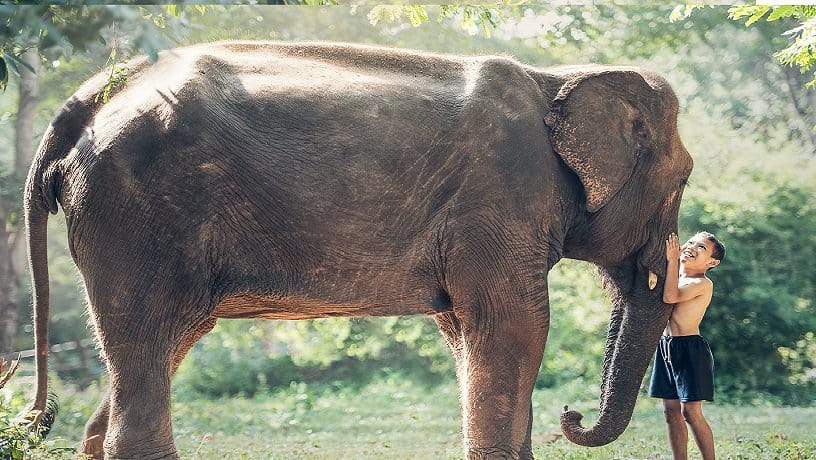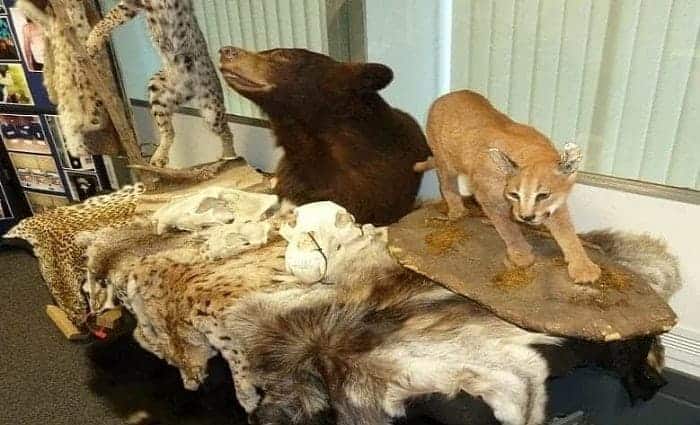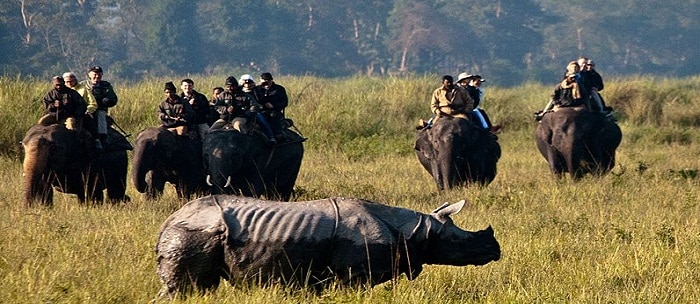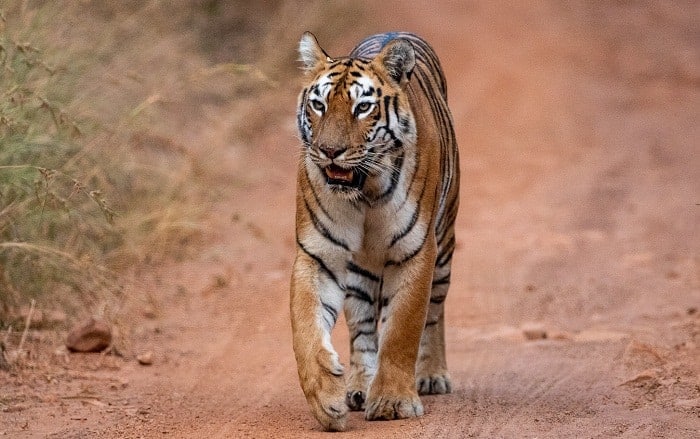Before getting to Wildlife Conservation in India, we must understand the concept of Wildlife conservation. It implies the employment of practices that lead to the preservation or saving of the environment against human and natural actions.
It basically aims towards saving the wildlife species and the requisite flora and fauna, which is inhabited by them. Since there are thousands and thousands of species that inhabit the forests, mountains, deserts, and rainforests, the preservation of all kinds of flora is important for the preservation of such species.
What is Wildlife Conservation?
Ever since India became independent, there have been provisions in the Directive Principles of the State Policy which indicate that wildlife protection in India must be a priority of the government, and such habitats and eco-locations in the country should be preserved and protected through legislative and legal measures.

IMPORTANCE OF WILDLIFE CONSERVATION IN INDIA
Since the population explosion in the country and the world, we have become largely dependent on the natural habitat to satisfy our needs for resources, including water. The constant deforestation and exploitation of wildlife through industrialization have depleted the green cover and increased pollution.
The consistent encroachment into wildlife zones, reduction of forest cover, poaching, and other illegal activities surrounding these have further increased the necessity of wildlife conservation in India in a more predominant and stricter manner.
In the last few decades, there have been increased cases of animal poaching, international smuggling of rare animals, their skins, and even tusks in the case of elephants and rhinos.
HISTORY OF WILDLIFE PROTECTION IN INDIA
Though the concept of Wildlife conservation in India has been prevalent since the Mughal era, the conservation procedure post-independence began in 1952 with the creation of the Wildlife Board so as to formulate and regulate rules and procedures relating to wildlife conservation in India.
An important decision of the board involved the Board transforming all the game parks into sanctuaries and national parks. In the later decades, the Wildlife Protection Act, 1972 and Project Tiger, were launched in order to further the cause. Similarly, several other legislations were introduced by the Parliament.
Such legislations include Forest (Conservation) Act, 1980, the Environmental Protection Act, 1986.
The Wildlife Protection Act, 1972 is a very comprehensive and detailed document that aims towards making an all-round sphere towards the protection and preservation of wildlife and its other components by introducing strict penal provisions and providing provisions for Wildlife Sanctuaries, Conservation reserve, Community reserve, National Parks and for their maintenance.
NEED FOR WILDLIFE CONSERVATION IN INDIA
Although we have a general idea of why wildlife conservation is important in India, to better understand the growing need for the same, we must analyze further.
♦Leopard killings
Leopard killings have been seen in Odisha, Maharashtra, Assam, Jammu & Kashmir, as well as Uttar Pradesh, by angry villages due to non-intervention by the concerned departments and lack of knowledge as to the threat posed by the carnivore.
♦Elephant Killing
Elephant killing has been long seen and heard of across various states in the state, along the various corridors. This was done because, in some cases, the elephant trunks are illegally imported to other countries, as well as an inability to take requisite steps to protect the elephant corridors as well as information to the villagers or farmers regarding how to tackle these lost elephants and promote awareness about the same.
♦Blackbear Killing
The black bear killing has also been initiated in the state of Assam. This is an animal that is protected under the Schedule of Wildlife in India.
♦Tiger Killing
Tiger killing has been most profound in India, especially in the states of Assam and Gujarat, which house the largest national parks i.e., Kaziranga National Park and Jim Corbett National Park, which has reduced the number of tiger population, which has now led to strict measures for the conservation of the tiger population.
There are many other animal species that are being threatened to the point of extinction, but very few steps have been taken to preserve these species of animals, and hence all these killings and lack of awareness show the greater relevance of wildlife conservation in India.

WILDLIFE OF INDIA
India is home to more than 500 species of animals and more than 2000 species of birds spread across the sub-continent. The Wildlife in India is of such a vast nature, which is not easy to comprehend or even simply believe once we come to realize the grandeur of the number.
From the Kaziranga National Park in the Northeast state of Assam to the Nagarhole National Park in Andhra Pradesh, India provides a protectorate to a large number of birds and animals, some of which also fall under the endangered category such as the One-horned Rhino, the Royal Bengal Tiger in the Sunderbans of West Bengal.
The Indian sub-continent is home to about 14.7% of amphibians, 6% of birds, 6.2% of reptilians, and 7.6% of mammals.
Indian forests are also sheltering innumerous carnivores such as Clouded Leopards, Dhole, Viverrids, Honey Badger, Asiatic lion, Large Indian Civet, Sloth bear, and many more.
Similarly, India also houses herbivore animals such as Onager, Bison, Dugong, Sambar deer, Asian elephant, Chital, Barasingha, Himalayan Tahr, Chevrotain, Kiang, and many other animals whose names are also not known by a majority population.
As is evident, India also has a large variety of reptiles and birds and several other faunas which need to be preserved along with their habitat. The specific habitat required by each of these species increases the importance of measures to be taken for wildlife conservation in India.
Also, read- Briarwood Ranch Safari Park

WILDLIFE CONSERVATION EFFORTS IN INDIA
In the 21st century, the Indian government has taken several steps for the furtherance of conservation of wildlife, especially the endangered species of animals in the country. Some of the major projects are –
-
UNDP Sea Turtle Project
With an objective to save the Olive Ridley Turtles from being further endangered or extinct, the Indian government launched this project in conjunction with the ideals of the United Nations Development Programme for animal protection and wildlife conservation in India.
-
Project Tiger
This is one of the major breakthroughs in the country regarding the overwhelming loss in the tiger population. Strict and protective measures such creation of around 47 Tiger reserves across to rising in the tiger population.

-
Project Elephant
In an attempt to protect the elephants from poachers, tusk-smugglers, and unnatural deaths, this project was launched by the Government in 1992 and provide a safe haven to these majestic creatures and creating awareness about the various initiatives taken by the State in this aspect.
-
NGOs for supporting Wildlife
Since the spread of awareness regarding the volatile condition of the ecology and wildlife in India, many non-profit organizations have also emerged supporting the cause of c0onservation of wildlife in India by taking small and large steps towards these goals.
The example of the World Wildlife Fund or WWF, which works on a national level, besides the various state-level organizations focused towards a particular cause in such state.
-
State efforts in Conservation
With the effect of the legislation and guidelines passed by the Centre and State regarding the conservation of wildlife, India has seen astonishing growth in the number of parks, sanctuaries, or reserves across the country.
As of today, there are 101 National Parks in the country, around 566 Wildlife Sanctuaries, 97 Conservation reserves, and more than 900 protected forests in the country.
In addition to that, there has been more emphasis on the importance of the environment and the detriment of the animal ecosystem and how human activities are largely affecting such an ecosystem to generate awareness.
There are several international covenants that also help in promoting these guidelines, such as the UNDP. Many of the forest reserves and rainforests in India have been marked as protected sites by the State, and any or all forms of industrial activity are prohibited in these areas.
ANALYSIS OF WILDLIFE CONSERVATION IN INDIA
It would be completely wrong to state that the conservation efforts in India in relation to its wildlife are negligible, as we have seen considerable evidence to negate such ideas.
However, it would be quite appropriate to assume that such efforts are somewhat lacking in execution as well as the commitment by the concerned Departments or States.
In a majority of States, with diverse flora and fauna, as well as multiple species of plants, animals, and birds, the State has failed to take adequate steps to educate the masses concentrated near those ecological sites about the importance of animal preservation as well forest preservation.
It is also a fact that the danger of illegal activities across various national parks and sanctuaries in an attempt to smuggle exotic animals and birds, and even reptiles to international black markets and the alleged involvement of the local authorities, including the concerned Forest Department and the Police Department.
Thus, insider training in this scenario has been seriously affecting the conservation efforts of the State and that of the people.
In the end, we can only surmise that although it is the responsibility of the State to create awareness and protect our diverse wildlife, without the support of the public at large, it hardly seems that such goals will ever see the light of the day.
WHAT CAN THE PEOPLE DO IN WILDLIFE CONSERVATION?
It might seem improbable for most of us to go to these forests and sanctuaries and dedicate our lives to their protection, but that is not the only option people have.
Another thing we can do is, we can spread awareness regarding how to tackle wild animals without killing them, or which authorities to call in case of such an emergency, and what to do when they witness the perpetration of illegal activities.
Such awareness in the rural areas would be of tremendous help in the conservation effort of the State. Even the students can participate in activities curated by the NGOs or Institutes themselves to take action in helping the environment and being pro-active towards this goal.
FREQUENTLY ASKED QUESTIONS
1. How can I become a wildlife conservationist in India?
–> There is always an opportunity to join Wildlife organizations as Volunteers when the notification for the same is provided by the concerned authorities.
However, if you want to deeply pursue this field, there is ample scope after Class 12, whereby you can opt for the Bachelor of Sciences degree in Forestry or any related fields, where one can learn in-depth about the intricacies of wildlife conservation. Such programs for Forestry also extend to a Master’s degree as well as a Ph.D.
2. What are some wildlife conservation practices?
–> Some of the common practices employed to support wildlife conservation are-
- Following the 5 Rs, i.e., Refuse, Reuse, Reduce, Repurpose and, Recycle.
- Follow a plant-based balanced diet.
- Avoid and protest activities relating to hunting sports or injuring wildlife.
- Express opinions to the NGOs in this field and legislators for improved policies.
3.What are the steps to conserve wildlife?
–> Wildlife conservation is not a sphere only for the State but for the people as well. It is our responsibility to speak up about the mishaps we encounter or regarding any faulty administration practices.
We must openly acknowledge the importance of wildlife conservation in India and encourage steps taken in this regard and whole-heartedly dedicate ourselves, either in terms of financial support or in terms of time, because our survival is directly dependent upon the survival of the ecosystem.
4. What are the 4 types of conservation?
–> There are 4 major types of Conservations-
- Environmental Conservation
- Animal Conservation
- Marine Conservation
- Human Conservation
5. What are the benefits of Wildlife Conservation?
–> Wildlife Conservation in India or anywhere else is not without its perks, and as such, it does not really boil down to saving the planet. Here are some of the major benefits of conservation-
- Preservation of beautiful valleys and forests
- Preservation of the host of medicinal and helpful plants found in such conserved areas
- Preservation of beautiful and exotic creatures from extinction
- Preservation of the rich culture and heritage of such place
- Protection of biodiversity and balancing global climate change
6. Where can I study Wildlife Conservation in India?
–> Although there are various institutes where one can receive a graduate or Masters’s degree in Forestry for pursuing Wildlife Conservation, there is one institute, namely the Wildlife Institute of India, in Dehradun, which focuses primarily on this sphere.


Leave a Comment